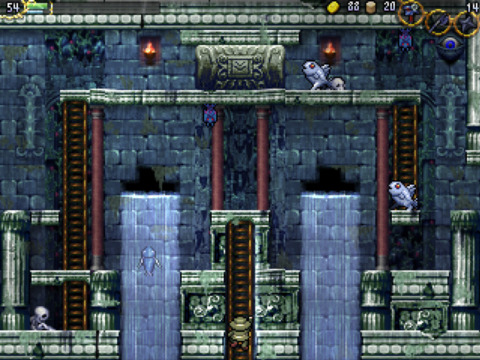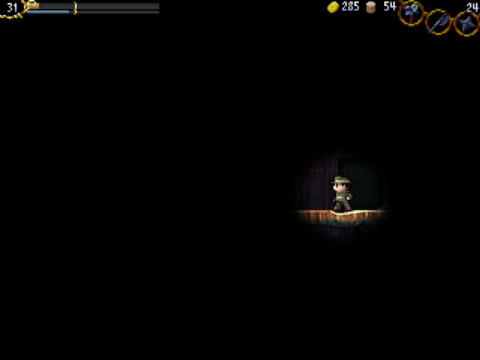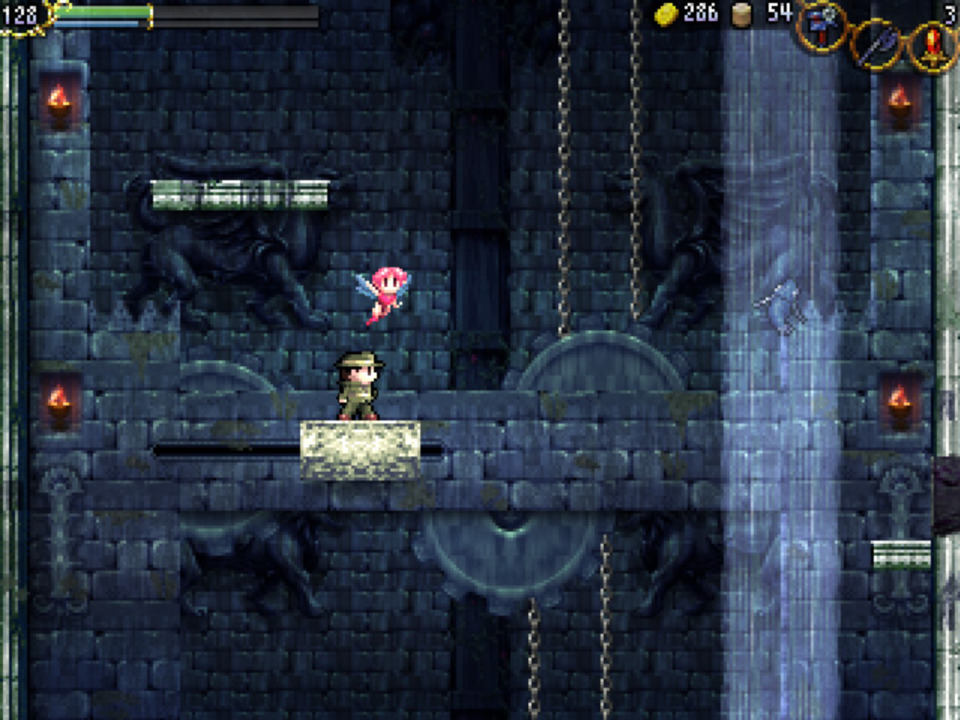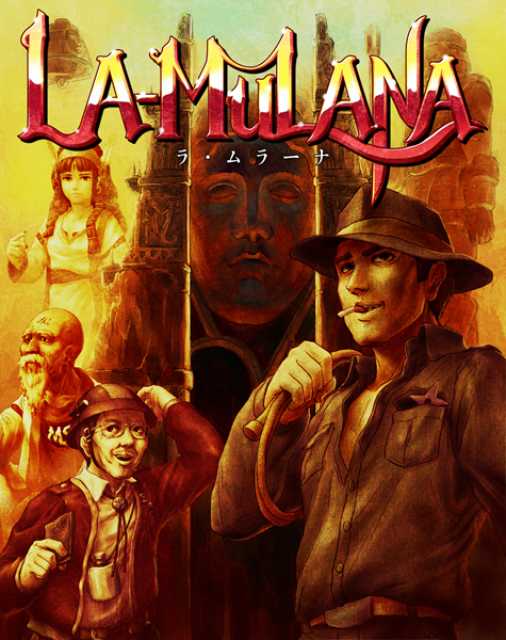Strange Red Depths
Difficulty: it’s the Dark Souls of video game discussion topics. We, as in games-people, have begun to look inward and point the microscope towards the art of making virtual tasks harder for a while now. The “how” has been progressively honed for ages, but games are increasingly wondering why. In the era of the arcade, people would literally line up to do something that was designed to be a virtual adversary. Nowadays, we have the gall to do it in the comfort of our own homes, quite possibly for none of the gain that an arcade environment might provide (e.g. inputting “ASS” in a leaderboard and high-fiving friends). Regardless of its form, it’s a strange tradition that aliens surely scratch their massive, gray foreheads at while observing us like an ant farm.
For many games, difficulty is critical to their entire gestalt. Marketing, reputation -- you name it. As long as games have mechanics (and by extension, learning curves), the challenges associated with them will play a factor. And as long as this is true, the interior designers of digital funhouses will sometimes prefer the blood of players over paint. Seeing as how the actually-impossible-to-beat Dwarf Fortress’ tagline, “Dying is fun!” is absurd enough to make Albert Camus scream into a pillow, surely this is all self-evident. It’s a cultural inherence, or at least became one the moment that GAME OVER was coded to appear on a series of cathode-ray tubes.
I speak of difficulty with regards to La-Mulana because it’s actually, truly impossible not to. It, more than any other game this side of Bullet Hades, premeditated its reputation. It holds impenetrability like a makeshift knife in a dark alley. Anyone unfortunate enough to cross its path will run the risk of an esoteric puzzle lodged into the kidney, which is want it wants, and surely you don’t want it to win, do you? It possesses a rare feeling of genuine risk and failure that looms over the entirety of the ruins. The idea of not finishing due to incompetence is made manifest in a way that few games try. Well, to pull back the curtain a bit, that fear never exists in games now that the internet exists (thank god), but even a little suspension of disbelief really evokes how fucked that first player in 2005 must’ve felt.

Although I didn’t actually play the freeware version released in 2005, I have it on good authority that 2011’s remake remains similar enough for this to still be the case. After all, the biggest changes are audiovisual in nature (besides the bosses and puzzles, I know). It’s a bit strange that the largest change from the freeware version is the game’s presentation, which hinged on its resemblance to Konami's MSX library, but the new ruins are too pretty and the new soundtrack is too catchy for this passing thought to stick. And besides, the aestheticized difficulty of the former’s MSX worship rings loud and clear.
Let’s get one thing out of the way first: La-Mulana is observably unfair. It does not hold the accepted notion that fairness === good. The clumsy protagonist, Lemeza, will unwillingly be the participant of many Ponzi schemes that are designed exclusively to cause strife. You will encounter puzzles which cause your eyes to ache from the involuntary pressure of a wince. And you will take every single one on the chin because it’s 2019, and no-one is getting tricked into playing games like La-Mulana anymore.
Like a hostage pleading with their captor, it’s natural to ask for the reason why. The most generally accepted one is that the ruins of La-Mulana are a decaying piece of architecture hostile to Lemeza’s presence, so of course it would be unfair. While I respect the rationale put on display to let Nigoro off the hook, I think the answer is much simpler: it’s funny. Putting a weight on a dais only for the stone face in the background to drop its colossal jaw onto the softest part of your head while the “whoops!” jingle plays is the kind of gag that Buster Keaton could only dream of. The joke is only amplified by the fact that this may very well lead to the Game Over screen, a move so pungent with malevolence that only extreme responses apply. You will laugh, or you will close the game -- there is no in-between.

Though the early game is where the majority of bamboozling takes place, the game ebbs and flows with your internalization in mind pretty masterfully, slowly restraining the finger that gleefully pressed the “place trap” button every two or so screens in the early game. Said finger instead opts for once every few hours, which, apparently, is just enough time to forget that it’s capable of doing that. There is a quadrilogy of achievements that are mockingly activated by “falling” for specific traps, and each is spaced out evenly between different levels of game familiarity. I somehow only fell for one of three that I saw, and it was the third.
This brand of provocative venom, combined with the offal of every 80s Konami game mixed together, forms a setting so dizzying that you’ll end up drunk on its fumes. As fun as it is to write antagonistic metaphors to paint the game as a villain, I can honestly say that piecing together such a mystifying locale, and thus mastering it, was an unforgettable and sterling experience. No other game has made me fill out a 13-page Word document with clues and observations, so, if anything, La-Mulana can take pride in that.
It’s inevitable, though. There will be a moment where the enchantment suddenly stops, and that feeling the game had over you will halt. It happened to me, and it’s happened to everyone who’s shared their opinion of the game. For some, this is the Gate of Illusion, with its pointedly rude esotericisms; and for some, Chamber of Birth will eat your resources like a hot bowl of curry. While I loved the former, the latter caused me to follow a walkthrough with complete obedience, and even then, I still hated every moment. It might be an entirely different point for you because, and I don’t put this lightly, at its most corrosive, La-Mulana is a litmus test for finding your least favorite thing about video games. Like death and taxes, you cannot escape it.

For anyone who agrees with the sentiment that games have been and will increasingly get better over the course of history, these blights seem too obvious to state. But the answer isn't that simple. You can’t take the bullshit out of La-Mulana -- its in its DNA. You render it a lifeless husk the moment the bad is removed. Even at the peak of my frustration, I was still in awe of this monstrosity. Of course, it's perfectly understandable for this game's taste to be horrible on your palate; I mean, it's at least partially designed to be exactly that. But, y'know, after years of playing games, it was oddly invigorating to play something so out-of-step with nearly every existing folkway of game design. And with such confidence, too!
It's a bit of a coincidence, I guess, that something so passionately old-school ends up feeling refreshing, but the scale and ambition of the game is something of its own doing. It took me dozens and dozens of hours to wrap this game up, and I still have stuff I could do. Granted, it sounds like hell (because it actually is Hell), but it's there if I ever come back. And I have a feeling I will, because I'm still thinking about new ways of tackling the ruins weeks after finishing.
In an attempt to exorcise the final bout of (playful) spite I hold for this game, I’ll say this: in being such a commitment to “the bit”, La-Mulana triumphs as a spectrum of all that games can offer, for better and for worse. There are unprecedented highs in witnessing what may be the single most complex and fascinating Metroidvania work its magic, only for you to realize that there’s an abundance of obstacles waiting to be the subject of your dread. None of that stopped me, however, from accidentally replaying too much to grab these screenshots, which tells me how much I like this game pretty succinctly. I just wish I knew why.
